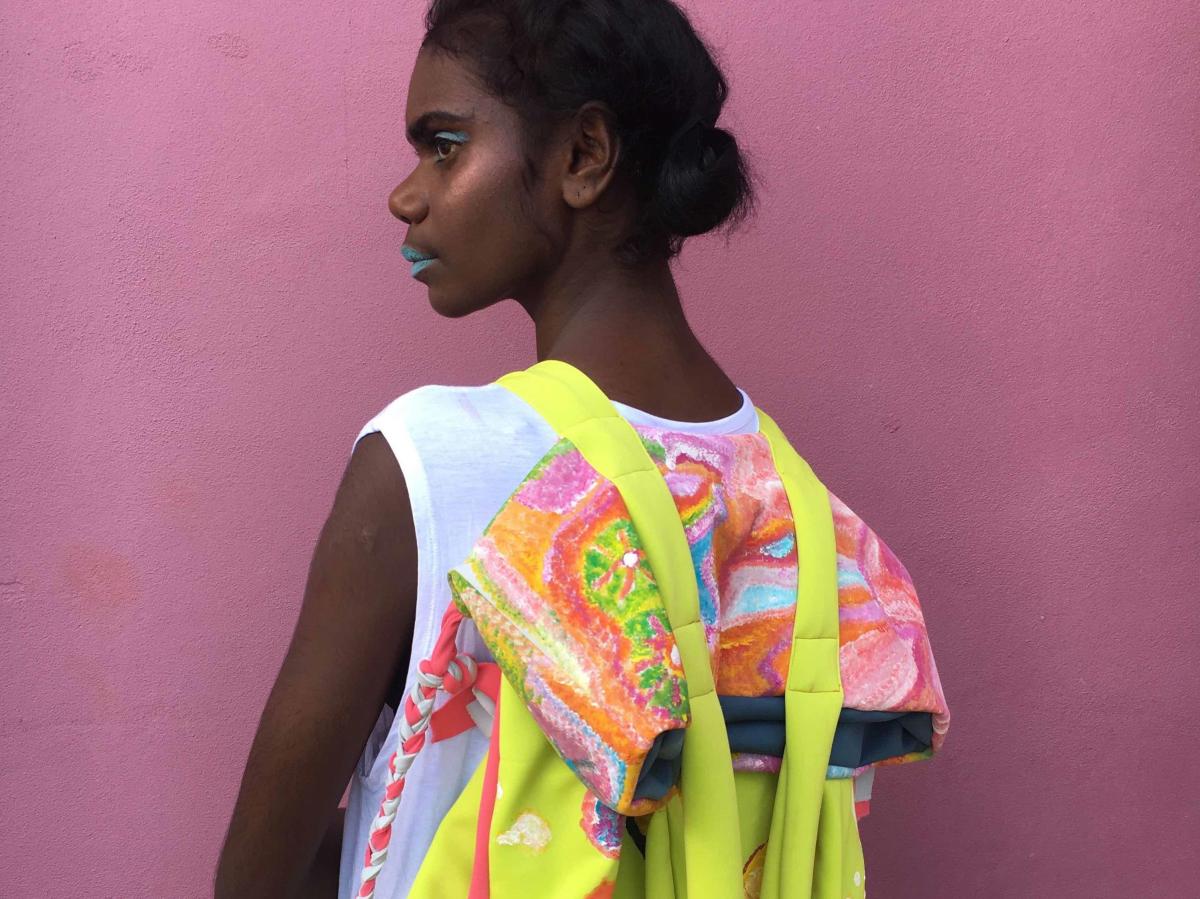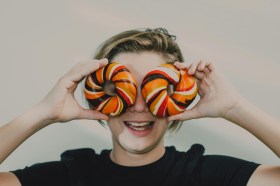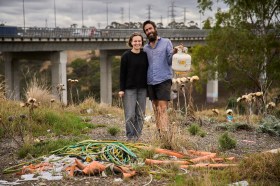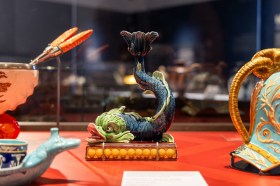Artist Rhondell Williams in MIArts bag 2017. Photographer: Grace Lillian Lee.
The Indigenous Art Centre Alliance (IACA) is the peak body for Indigenous art centres across far north Queensland and the Torres Strait. It supports and provides professional development opportunities for artists and art workers across 14 community run and Indigenous owned art centres.
As a strong supporter and board member of the Indigenous Art Code — the driver of the ‘Fake Art Harms Culture’ campaign — the IACA continues to advocate for the ethical purchase of Indigenous art in Australia and has lobbied the Australian Government to address the growing amount of tourist merchandise that misappropriates Indigenous culture.
The campaign, launched in 2016, calls for legislative changes to prevent the exploitation of Indigenous culture.
In August 2017, an inquiry into the growing presence of inauthentic products was referred by the Minister for Indigenous Affairs, Senator the Hon. Nigel Scullion. Submissions for the inquiry closed 3 November.
‘We’ve been working together with the Indigenous Art Code on the campaign for a couple of years now. We’re really pleased to see how it has been picked up by the federal government, with a House of Representatives Inquiry’ explained IACA Manager Pam Bigelow.
‘There are now around 134 submissions responding to the House of Representatives call for submissions on the situation where inauthentic work is coming into Australia from overseas, and even from within Australia itself, where it is created [locally] but is not necessarily authentic.’
The situation is particularly bad in Queensland, Bigelow said.
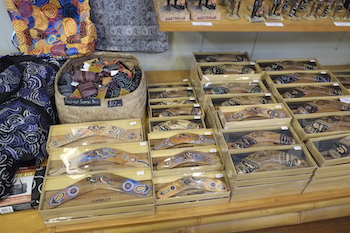
Fake art in Kuranda North QLD where 90% of the Aboriginal Art is fake. Image supplied: IACA.
‘Due to the high tourism with the reef and the amount of tourists we have, there’s a lot of call for these cheap souvenirs in Cairns in particular, as well as Kuranda, which is just west of Cairns in the Tablelands … Thousands of tourists are going there daily and every single shop is just bursting with fake art. I’d say nearly 90% of what’s in Kuranda is fake,’ she explained.
Changes to legislation which will protect artists against unfair appropriation could lead to the promotion of authentic products, benefitting both artists and consumers. Bigelow said the IACA and some member art centres are planning ahead to help facilitate the ethical consumption of Indigenous arts and culture within the tourism industry.
‘Already across the 13 member art centres we have quite a lot of merchandise that has been developed where the artists get their share of the sale, and the art centre too. It goes straight back into the community. We are seeing that as a very exciting opportunity. When, hopefully, the laws change and the fake art goes, authentic products will replace that, providing a further economic stream for the artists.There are a lot of very beautiful products being made its very exciting, customers will be pleasantly surprised if the law is changed. “ she said.

Authentic Aboriginal merchandise from Yarrabah Art and Cultural Precinct Far North QLD. Image supplied: IACA
In this way the removal of fake art can have a ripple effect that will grow the important local service offered by art centres in remote communities.
‘It is important that people understand that art centres are Indigenous owned and run. They are often the only non-government entities in the community and the commission system works so that, with the sale of art, 30% to 40% goes back into the art centre … They are a business but it’s not a profit business, all the profit goes back into the community,’ Bigelow said.
‘With really successful art centres, where they are selling a lot of work, there are really big infrastructure outcomes from the money they are making that goes beyond the art centre, into all kinds of areas like local schools and healthcare. The art centres benefit the whole community. It is a great model.’
To find out more about the IACA visit https://iaca.com.au/
